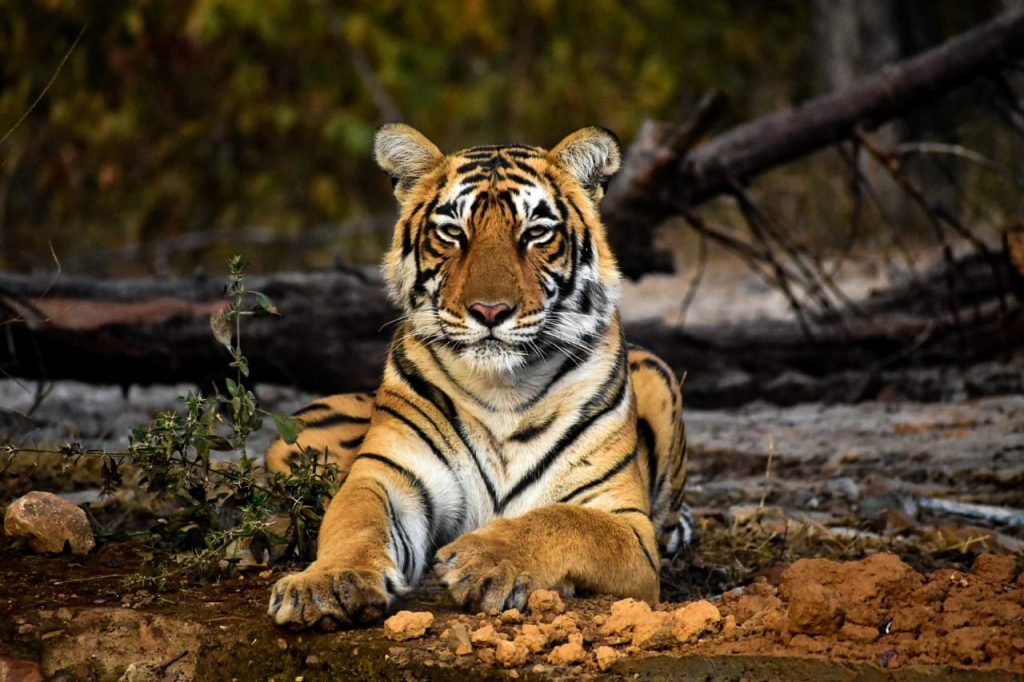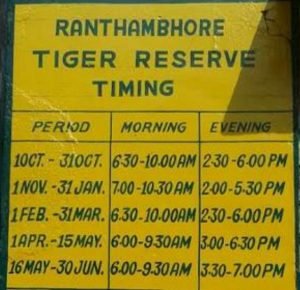Ranthambore National Park

Introduction of Ranthambore National Park
Located at the Sawai Madhopur city across Southern Rajasthan, Ranthambhore National Park has been protecting the natural beauty of the state with its substantial cultural heritage and copious habitat. Strong historical roots are the Park’s best bet, as it was once a prevalent hunting ground for the rulers of Jaipur. It is spread covering a vast area of 1334 sq kms and has a special blend of flora and fauna that’s loved and recognized by millions of people across the globe. This Park is surrounded by Aravalli hill range and Vindhyas, therefore, you get a fantastic view enroute to the park.This Park is also home to several lakes like the Raj Bagh Talab, Padam Talab, and Malik Talab.
Ranthambhore has the best Bengali Tigers of its kind and no wonder this is the first choice for most travel lovers. A trip to Ranthambhore will undoubtedly offer you with an unforgettable experience.
Safari rides at Ranthambhore
Ranthambhore is a unique blend of opulence and wildlife. To enjoy the flora and fauna in its own natural habitat, jeep safari is the best option. Tourists, photographers, and other wildlife enthusiasts find this safari amusing and it’s been one of the key tourists’attractions.
You can enjoy two types of safaris on your trip to Ranthambhore: Jeep and Canter Safaris. The jeep is a 6-seater, mostly open-topped vehicle, that must be booked 90 days in advance, last minute bookings should also be possible. Jeep safari is the ideal option for special interest visitors like wildlife photographers, bird enthusiasts, etc., and for people travelling in small groups.
On the other hand, Canter Safari is considered ideal for people travelling in large groups. It is a open top safari bus, that can be shared with other passengers as well. Tourists’ private vehicles are allowed in the jungle, as they’re not registered or affiliated with the forest department.

Ranthambore Safari Timings
Safaris happen twice a day depending on sunrise and sunset. The first safari ride starts early in the morning and the latter, in the late afternoon. The duration of each safari is approximately 3 hours. forest department.

Ranthambore Safari Zones
The Park is spread around 282 square kilometers, out of which 20% is declared as tourist spot and is available for tourists. This 20% is again divided into 10 zones. You can cover one zone per jungle safari.
- Zone1 – This zone starts from Singh Dwar. You can spot tigers at Tuti Ka Nala, Singhdwar, Sultanpur Chowki,Dhoop Chowk,KalaPeela Pani, Khariya of this zone.While its common for tigers to be roaming around any of these areas, consistent sightings are reported at Khabli, Kala Peela pani,Kharia, and SinghDwar. T39 and T57 are the tiger species that can be spotted at this zone.
- Zone2 –The probability of spotting tigers in this zone is quite high. You can spot tigers at Lahpur Tiraha, Phuta Bandha,Nal Ghati, etc., though the regular sightings spots are Nal Ghati,Jogi Mahal,Lahpur Tiraha,Phuta Bandha,Phuta Kot, and Guda. Tigers T19 and cubs, T28, T57, T60, and T39 can be found in this zone.
- Zone3 –Padam Talab of this zone is the place of interest for most tigers in the park. You can find the tigers T-28,T-84, T-19,and T-85.
- Zone4 – This zone is home for the most famous tigress Machli. You can find them in Lakkar Da, Lambi, Adidaant, Berda, Tamakhan, Takiya Kui, Pili Ghati, etc. The tigers sighted at this zone are T64, T41, T75,T25, T19, T28, T64.
- Zone5 – This zone is rich in fauna and the areas like Dhakda, Jokha, Singhdwar, and Anatpur are most visited by the tigers. Zone 1-5 share a common entrance before the secondary zone-specific entry gates. These zones exist from the time the Park was recognized as the Tiger Reserve. Zones 1 – 5 are consider as prime tiger sightings zones.
- Zone6-10 –These zones have tigers roaming in its natural habitat but the probability of sighting one is comparatively low. They would be an ideal choice if you don’t get a reservation in either of the first 5 zones.
You can choose the zones of your choice at the time of safari booking.
Flora of Ranthambore National Park
Ranthambhore National Park borders the luxuriant green forest alongside the backdrop of magnificent mountains. Besides enjoying the breathtaking view of untamed nature filled with magnificent flora, you can go ahead and play your favorite sport.Alongside outdoor, you can also enjoy varieties of indoor games including swimming, if you choose to stay in a resort. Ranthambhore National Park has about 539 species of plants. Mango, Dhok, Banyan, and Tamarind are some of the commonly found species of trees, among which Dhok tree is the most common type. This Park is home for one of the largest Banyana trees in the National, which can be spotted at Jogi Mahal.
Is it worth visiting?
Along with its magnificent flora and fauna, this park has an amazing landscape, which is worth just stopping and enjoying the view.Also, Ranthambhore National Park is the most famous birding destination in India, with approximately 320 species of birds including kingfisher, jacana, sarus crane, nightjar, bronzed-winged jacana, sandpiper, great-horned owl, painted sandgrouse, etc.
Do you dream of spotting the Royal Bengali Tigers right at its natural habitat? Do you envision Banyan trees towering overhead? If yes, a trip to Ranthambhoreis definitely worth giving a try. This Park is delightful for travelers of all kinds, with an endless array of flora and fauna.











